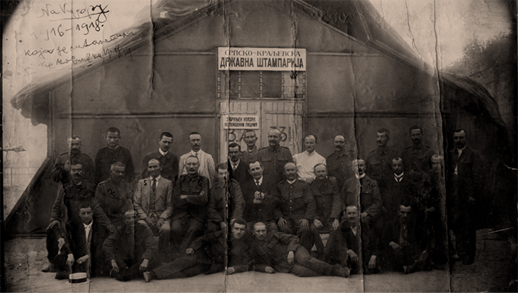
Background
The Great War Digital Library Great War originated as part of the project Europeana Collections 1914-1918. The project’s aim is to digitize and make publicly available more than 400.000 units made during World War One. So far accessible only in reading rooms and often rare and highly fragile because of the deteriorating quality of its paper, this content will be displayed online for the first time. The project’s digital collections include books, newspapers, trench journals, maps, music sheets, children’s literature, photographs, posters, pamphlets, propaganda leaflets, original art, religious works, medals and coins, everything that can be found in a national library. Europeana Collections 1914-1918, as well as the related projects Europeana 1914-1918, in which the users themselves contribute with their family memorabilia from WWI, and EFG 1914, in which video material from that period is digitized, have as their final aim the depiction of collective and individual experiences from the angle of the different sides of the conflict and make them publicly available via Europeana.
The Great War
The Great War is a digital library made as one of the results of the National Library of Serbia’s participation in the aforementioned project. The vision behind it is to collect all publications related to the Serbian people, created during WWI. At the moment, these publications are scattered all around the country and the world, held by various libraries and individuals. The aim of this digital library is to enable the users interested in the topic of WWI to explore and use the digitized collections both from the NLS and from other institutions keeping related materials. Furthermore, the plan for this library is to be used as teaching aid in schools.

About the Collection
The particular position of the Kingdom of Serbia and Serbian people in WWI reflects the selection of the material displayed in this portal. The publishing production of the Kingdom of Serbia was underdeveloped even before the war, and it was even worse during the war because of a lack of paper and because of the geographic position of Belgrade (where some 80% of the prewar production was published), which was on the very front line for over a year. After the occupation of Serbia, in the fall of 1915, and retreat of the army and government over Albania to the island of Corfu, a large number of refugees dispersed over France, Great Britain, Italy and Switzerland. One of the consequences of these events was the appearance of various publications in Serbian or domicile languages, from scientific to school papers, all around Europe. Serbian printing shops were established on Corfu and in Thessalonica, issuing dailies and books. Especially active was the printing shop of Serbian Invalids in Bizerte (Tunisia). At the same time, pro-Yugoslav emigration in North and South America issued a large number of publications about the war, as well as about ideas concerning the forming of the new Yugoslav postwar state. In occupied Serbia Austro-Hungarian and Bulgarian authorities published their papers, declarations to the people etc.. In Austro-Hungarian Monarchy, many propaganda brochures were published with the aim of strengthening the loyalty of the Slavic, especially Serbian population in the Monarchy. On the other side, a great number of journals, letters, photographs and other material held in the Special Collections of National Library of Serbia shed a new light on the daily life of the population in those turbulent times. It was our desire to allow our users to access content as diverse as possible, in order to help them understand numerous processes that changed European and Serbian society. We would like to invite all relevant content holders to contribute to this digital library and contact us at velikirat@nb.rs.



